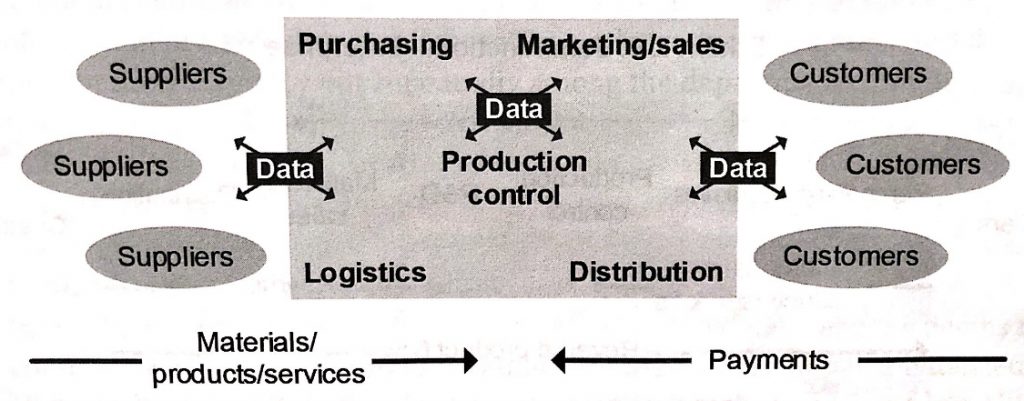Now, in the previous post, I mentioned that there are four stages of supply chain maturity.
In this article, we will look at the contents of Stage 1 of the Supply Chain Maturity Model.
Stage 1 : Multiple Dysfunction

Source: CSCP Version 4.3, 2019 Edition
Description
There is a lack of control both internally and externally. There are no clear goals or organizational roles defined within the company, and there is no connection with external parties other than those related to transactions, such as orders and invoices. For example, the person in charge of demand forecasting may be unclear, or the product development department, which is not officially authorized to place orders, may send original purchase orders to suppliers.
The APICS CSCP text also lists other common situations that organizations at this stage tend to fall into.
What tends to occur in the Stage 1 companies
- Internal activities tend to be undertaken impulsively rather than according to plan.
- Management provides only the most general sense of mission, communicated perhaps by pep talks at best or threats at worst.
- Forecasting tends fo be mostly guesswork, often inflated by unwarranted marketing optimism.
- Products are designed without advice from other areas that could provide guidance, such as manufacturing or marketing.
- Warehouses are sited near each market, stocked with an overabundance of inventory in anticipation of a big sale, and staffed with manual laborers who have little training.
- Trucks or trains are unloaded when they arrive and loaded when an order comes in, without much advance warning in either case.
Source: CSCP Version 4.3, 2019 Module1 P.17-18
As I have experienced in my work to date, I feel that there are quite a few companies like this. In particular, I assume it is common among early-stage companies that handle FMCG (Fast Moving Consumer Goods), such as cosmetics companies, which are marketing-driven and tend to put off investment in the supply chain. I would guess this is the case. There is no end to the list of areas for improvement in this level of organization. I myself have experienced the chaos of this stage.
Besides, the following unbelievable situations can occur (through my experience).
- Each organization develops original forecasts with different granularity and makes decisions of high financial impact based on them. The logistics and accounting departments find out about it later.
- Troublesome products using raw materials or components with ridiculous lead times are discovered just before the product launch.
- The inventory is already allocated, but the company mistakenly assumes that it can be used and that the product is ready to be shipped. When the time comes to ship, there is no inventory.
In a Stage 1 company, the work is usually a patchwork of messes, and the employees are basically busy with the work at hand. If you try to talk about “improvement” in this environment, you will be kicked to the curb and told, “Why don’t you help me with this task, instead of wasting time for dreaming?”
In some cases, there is no manager position for each functional area, even if you want to consult with your superior. Now you are at a loss. In these situations, existing resources are rarely enough to improve things. However, there is neither the financial resources to hire external consultants nor the human resources to do the consulting work – people who have the time or the ability to communicate the work to a third party.
CSCP does not have an answer to this question, but my personal hypothesis is that the only way to start is to procure a person who can organize the work and is highly receptive to chaos. If the person is merely rational and smart, he or she will not get along with the existing members and will surely fail. During the interview process, make sure that the candidate is not only smart, but also enjoys chaos.
In the next issue, we will see Stage 2 : Semifunctional Enterprise.
